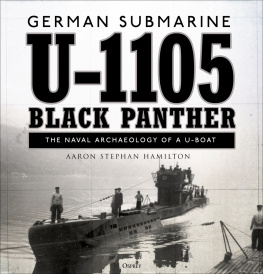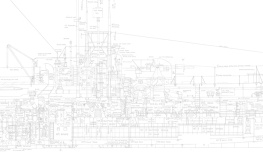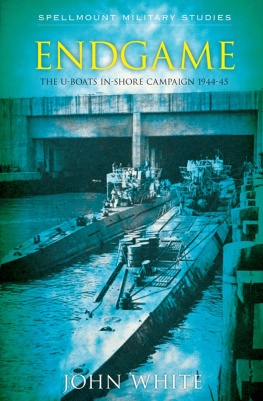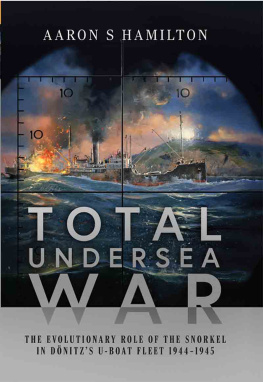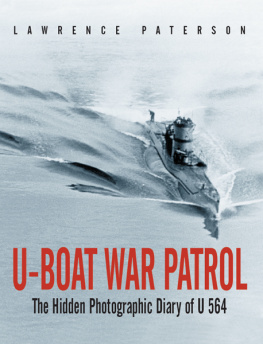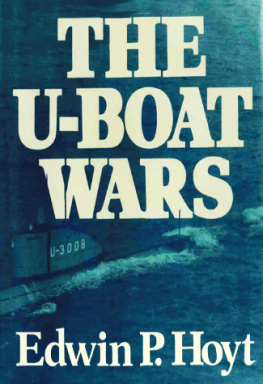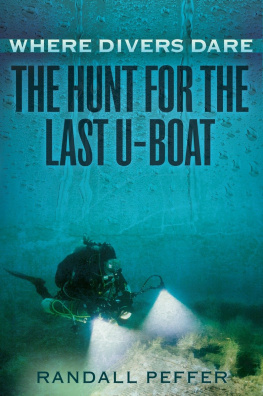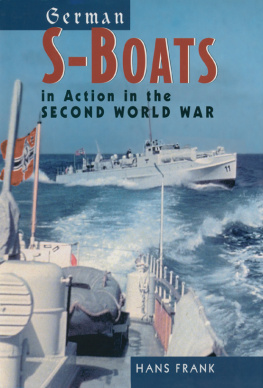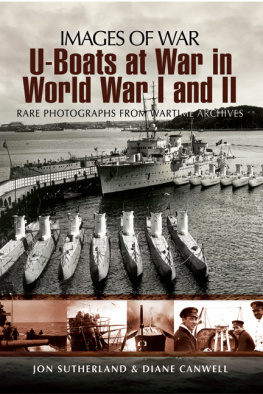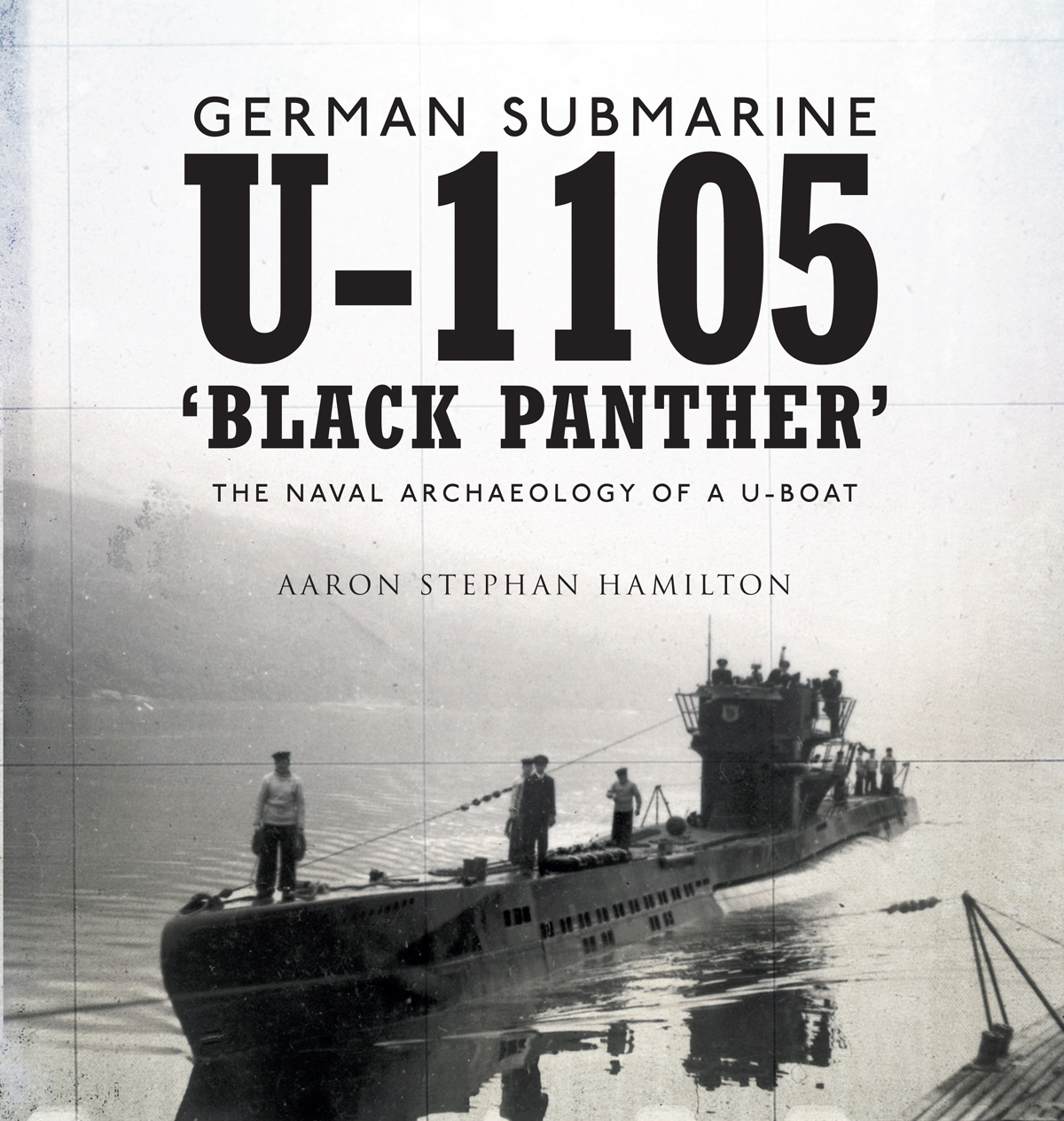
DEDICATION
For US Navy Capt Hubert Hugh Murphy (19172013)...... and the US and Royal Navy prize crew of the German U-1105
Black Panther.
They braved the North Atlantic winter storms of 194546 to bring this unique U-boat to the USA without ever knowing the reason why.
OSPREY PUBLISHING
Bloomsbury Publishing Plc
PO Box 883, Oxford, OX1 9PL, UK
1385 Broadway, 5th Floor, New York, NY 10018, USA
E-mail:
www.ospreypublishing.com
This electronic edition published in 2019 by Bloomsbury Publishing Plc
OSPREY is a trademark of Osprey Publishing Ltd
First published in Great Britain in 2019
Text and photographs Aaron Stephan Hamilton, 2019
Aaron Stephan Hamilton has asserted his right under the Copyright, Designs and Patents Act, 1988, to be identified as Author of this work.
All rights reserved
You may not copy, distribute, transmit, reproduce or otherwise make available this publication (or any part of it) in any form, or by any means (including without limitation electronic, digital, optical, mechanical, photocopying, printing, recording or otherwise), without the prior written permission of the publisher. Any person who does any unauthorised act in relation to this publication may be liable to criminal prosecution and civil claims for damages.
A catalogue record for this book is available from the British Library.
ISBN: 978-1-4728-3581-9 (HB)
ISBN: 978-1-4728-3580-2 (eBook)
ISBN: 978-1-4728-3582-6 (ePDF)
ISBN: 978-1-4728-3583-3 (XML)
Front cover: U-1105 possibly preparing for one of its numerous tests in Loch Goil while commissioned with the Royal Navy (Royal Navy Submarine Museum).
Back cover: Top: U-1105s Alberich coating along the portside bow for more detail see (Maryland Historical Trust).
Top centre: U-1105 on the day it was commissioned, June 3, 1944 (Maryland Historical Trust).
Below centre: Base of the sky scope for more detail see (Paul D. Lenharr II).
Bottom: 2cm watertight ammunition canister located aft of the conning tower on the upper
Wintergarten (gun deck) (Paul D. Lenharr II).
Osprey Publishing supports the Woodland Trust, the UKs leading woodland conservation charity.
To find out more about our authors and books visit www.ospreypublishing.com. Here you will find our full range of publications, as well as exclusive online content, details of forthcoming events and the option to sign up for our newsletters. You can also sign up for Osprey membership, which entitles you to a discount on purchases made through the Osprey site and access to our extensive online image archive.
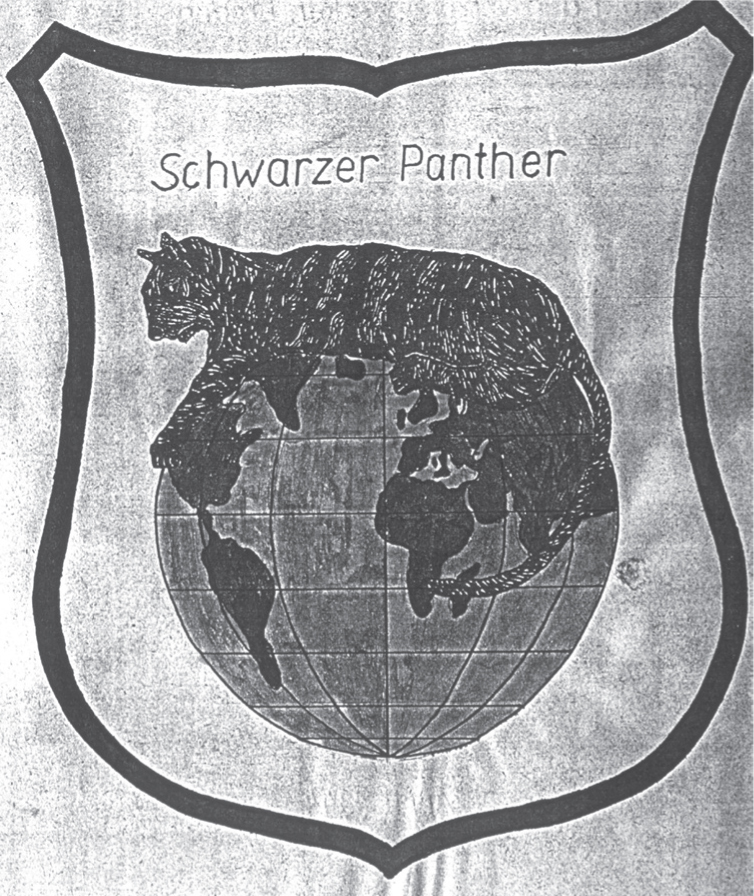
Figure 1. Black Panther.
(Courtesy of Maryland Historical Trust)
This image is the original representation of the U-1105s unique conning tower emblem that was handmade by a former crewman. The origin of the emblem stems from three events. First, the fact that members of the crew enjoyed a lively jazz song titled Black Panther that was obtained on record and played on board during its training while in the Baltic. The U-boats captain, however, was no fan of jazz. He preferred opera and banned the playing of the song on board. Second, the captains last name was Schwarz, which is the German word for black. Third, the U-boat was black due to its Alberich coating, while all other German U-boats were a variation of gray. When the time came for an emblem to be designed, the crew raised the prospect of a Schwarz (Black) Panther sitting on top of a globe portraying the U-boats operational area of the North Atlantic. The captain, noting the play on both words and themes, agreed. As one former crewman recounted: So we had a name, an emblem, and even a theme song!
CONTENTS
by Dr Innes McCartney
FOREWORD
Many years ago I had the opportunity to dive on some of the U-boat wrecks on the East Coast of the USA, including U869 and U853. Although I didnt manage to visit U1105, I read about its fascinating rubber coating; code named Alberich, it was one a number of truly transformational submarine technologies the German Navy developed in the mid-20th century, although little was publicly known then of its detailed characteristics.
Coincidentally, I had no idea that upon my return home to the UK I would almost immediately find myself looking at a previously unnoticed Alberich-coated U-boat in the waters of the English Channel. Alberich was the key to our successful identification of this U-boat wreck as U480, hundreds of miles from where it was listed as being sunk in 1945. The importance and rarity of its rubber coating was only known to me because of the rediscovery of U1105 a few years beforehand.
In those days, what we actually knew about the technical features of the late-WWII U-boat, with its plethora of new technologies, such as Alberich, GHG Balkon, and Snorchel, was not great. It has taken a lot of dedicated archival and archaeological research to develop a better understanding of these and many other aspects of the late-war U-boats and their operations. However, there still remains much room for improvement.
Aaron Hamiltons study of U1105, the Black Panther, is a very fine example of the new type of research that has helped to reshape our collective understanding of U-boat warfare and technology. He can do this because not only is he an assiduous historical researcher with a proven track record, but also because he is a diver. I have found that the ability to dive on submarine wrecks brings a practical hands-on experience that is hard to beat. It also can provide an inspiring spark that, once ignited, can drive truly great research. This book is a fine example of such a journey.
Within these pages is a great deal of information that was new to me, especially relating to the wartime performance of U1105. Whats more, her life in the postwar period is truly fascinating; the voyage to the USA is a feat of seafaring never repeated. Mr Hamilton has also done much to show how important U1105 was as a test subject. All in all, this is a fine study of a shipwreck, combining a descriptive approach to the wreck with detailed historical background to produce an excellent and informative book on the U-boat as a vessel of war and as an important artifact of our collective cultural heritage. It should serve as a benchmark for future studies of this type.
Dr Innes McCartney
Naval Archaeologist
Bournemouth University, UK, February 2018
PREFACE
My interest in the German U-boat that rests in the mud off Piney Point, Maryland was driven by a desire to better understand the late-war German technology with which it was outfitted, and how this technology was employed when it conducted its first and only wartime patrol. When maritime archeologists conducted the first survey on U-1105 in the early 1990s, their understanding of this U-boats unique features and wartime operational impact was based upon the available published historic record of that time, as well as what could be derived from the Naval Historical Center (now Naval History and Heritage Command) in Washington, DC, and the private German veterans institution known as the U-boat Archive in Cuxhaven, Germany. All of this research, however, was limited. The historic picture that was produced of

